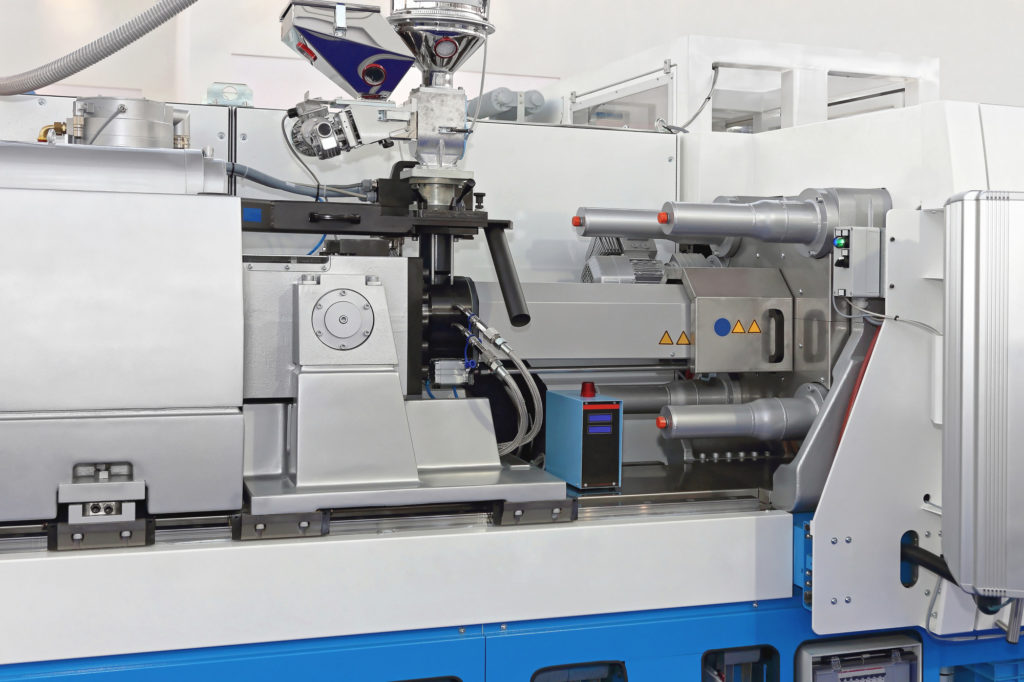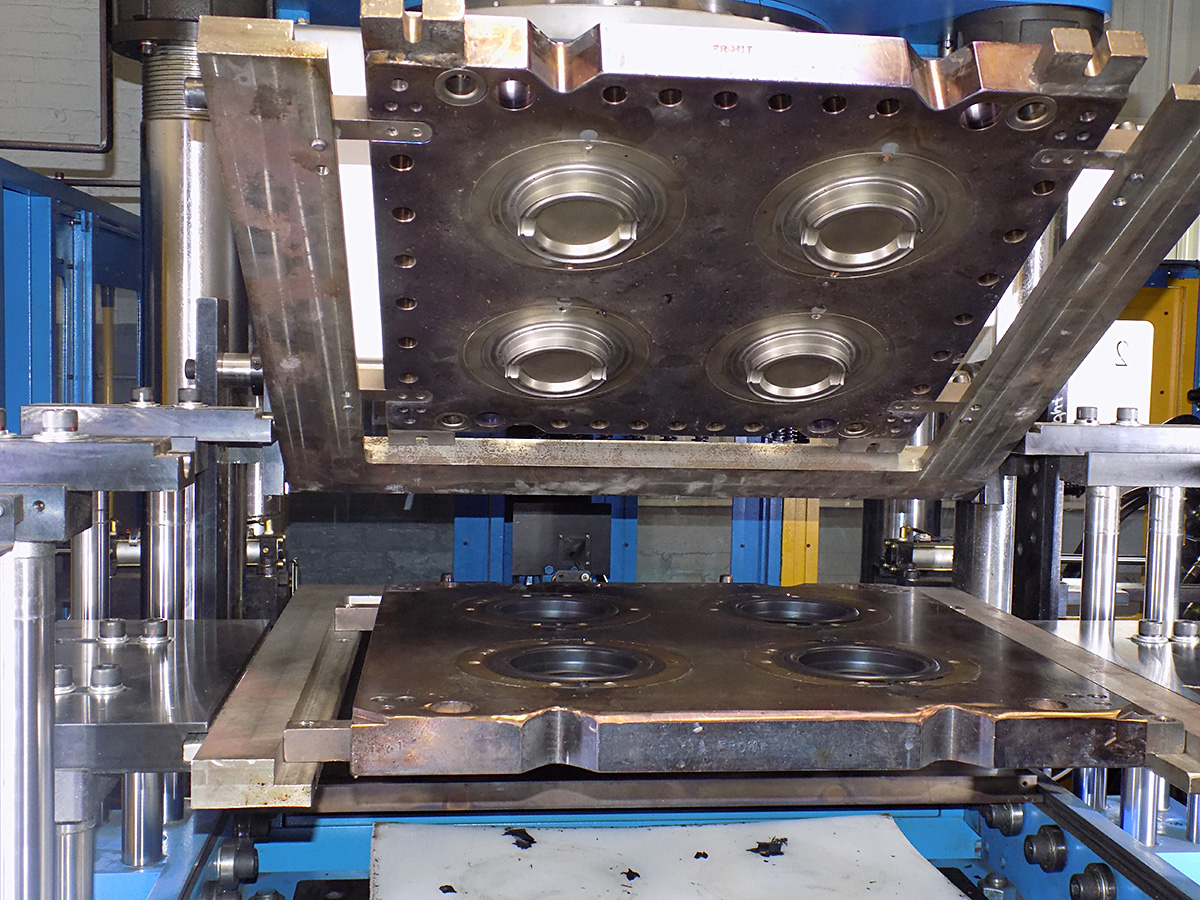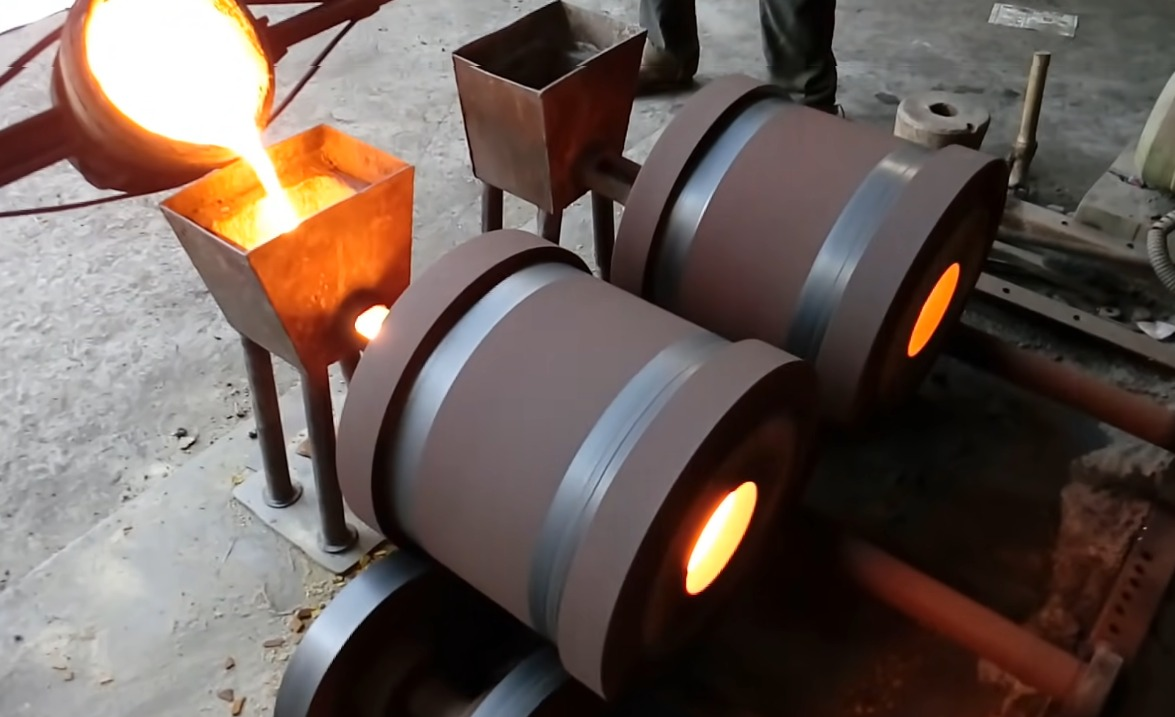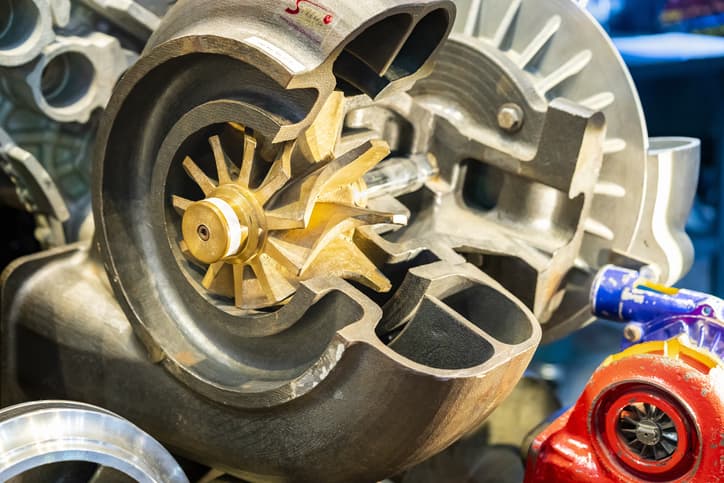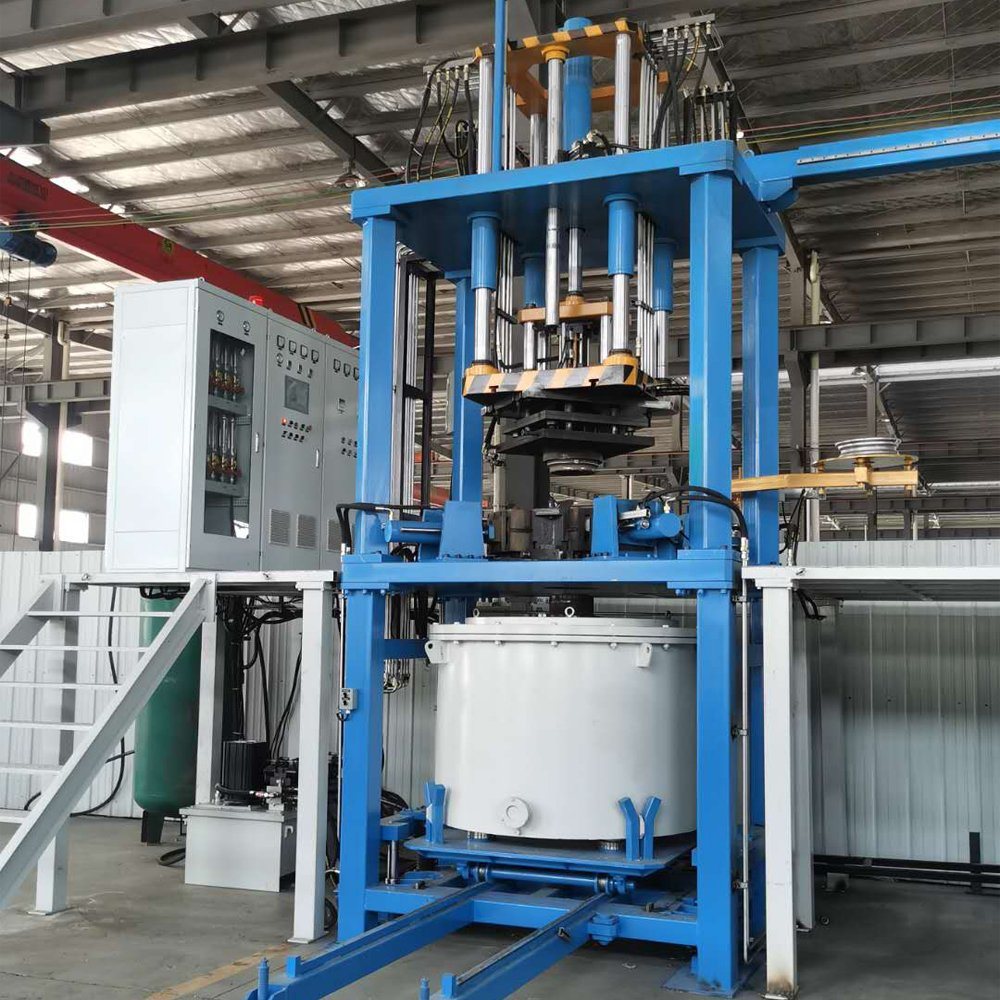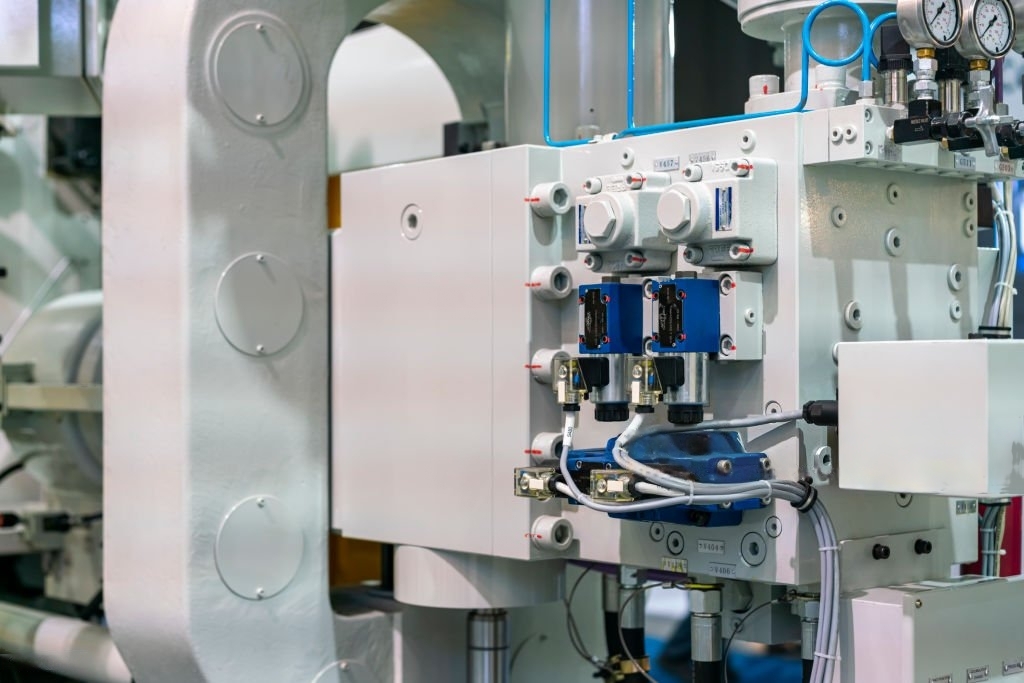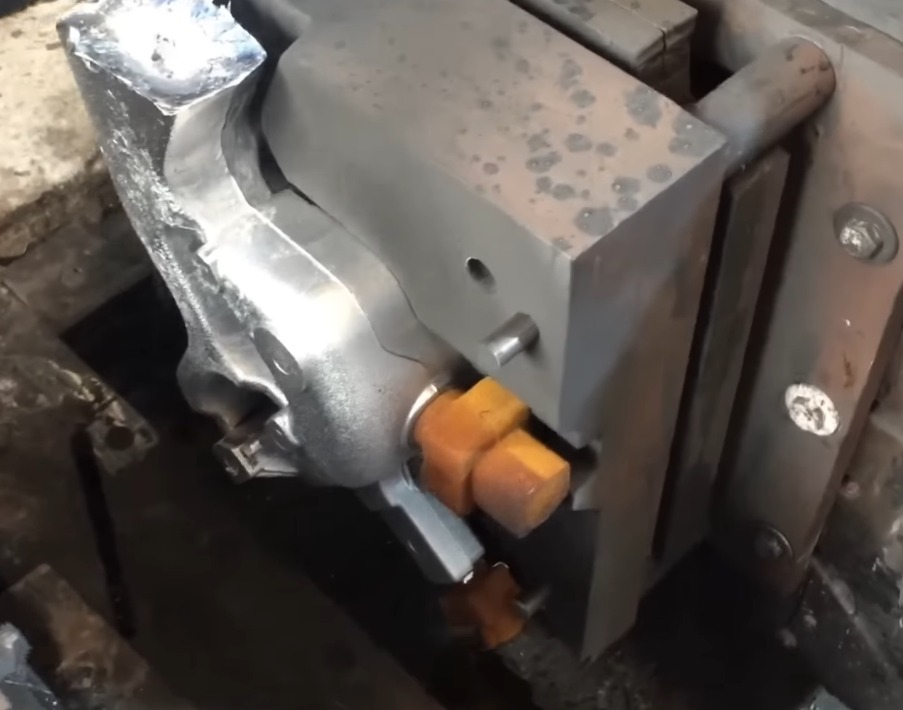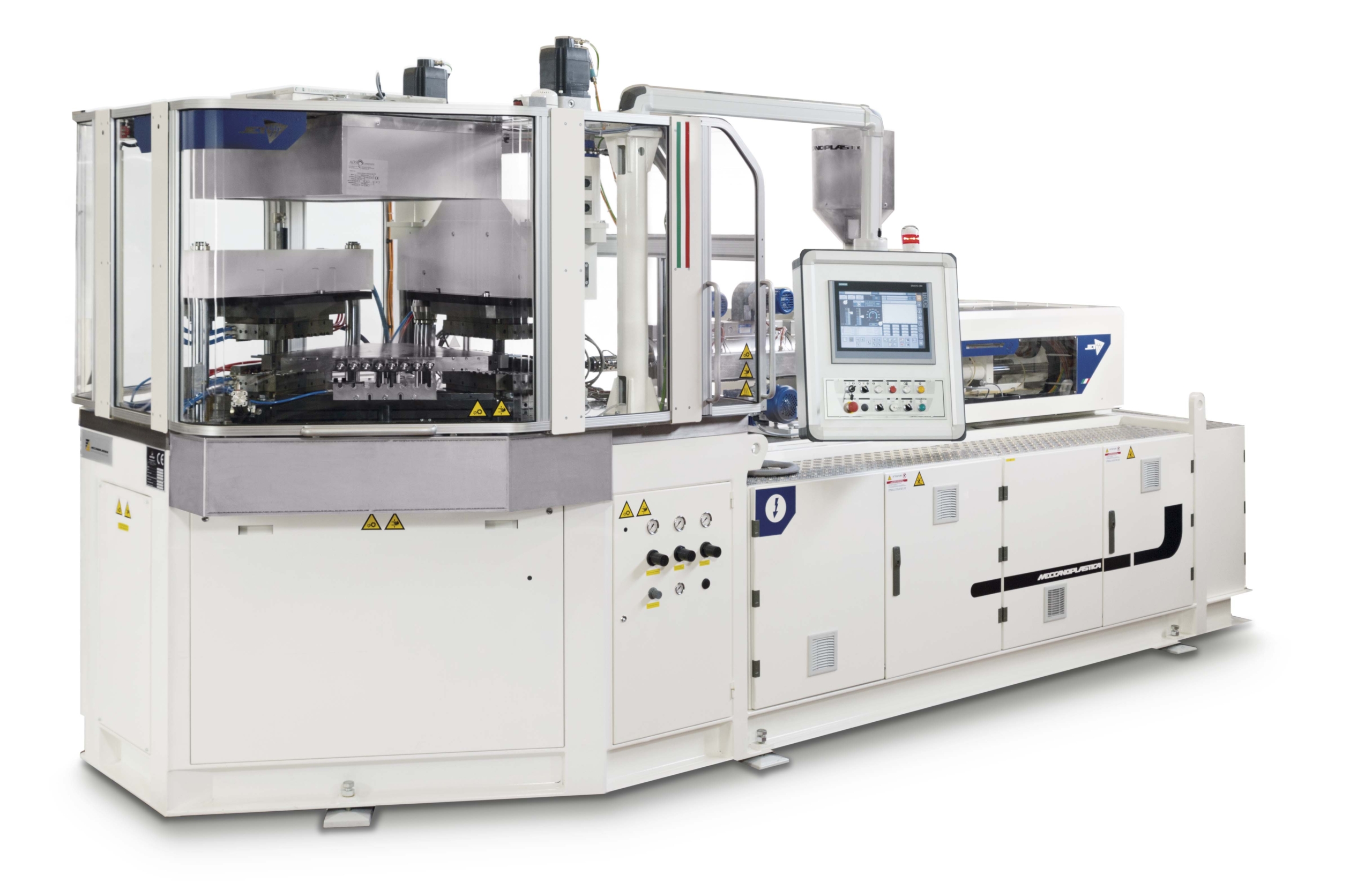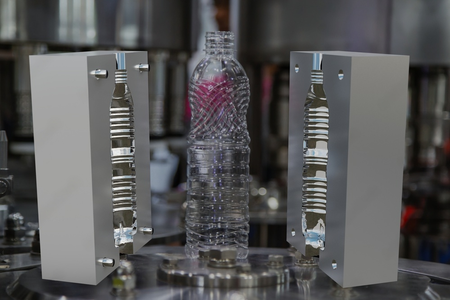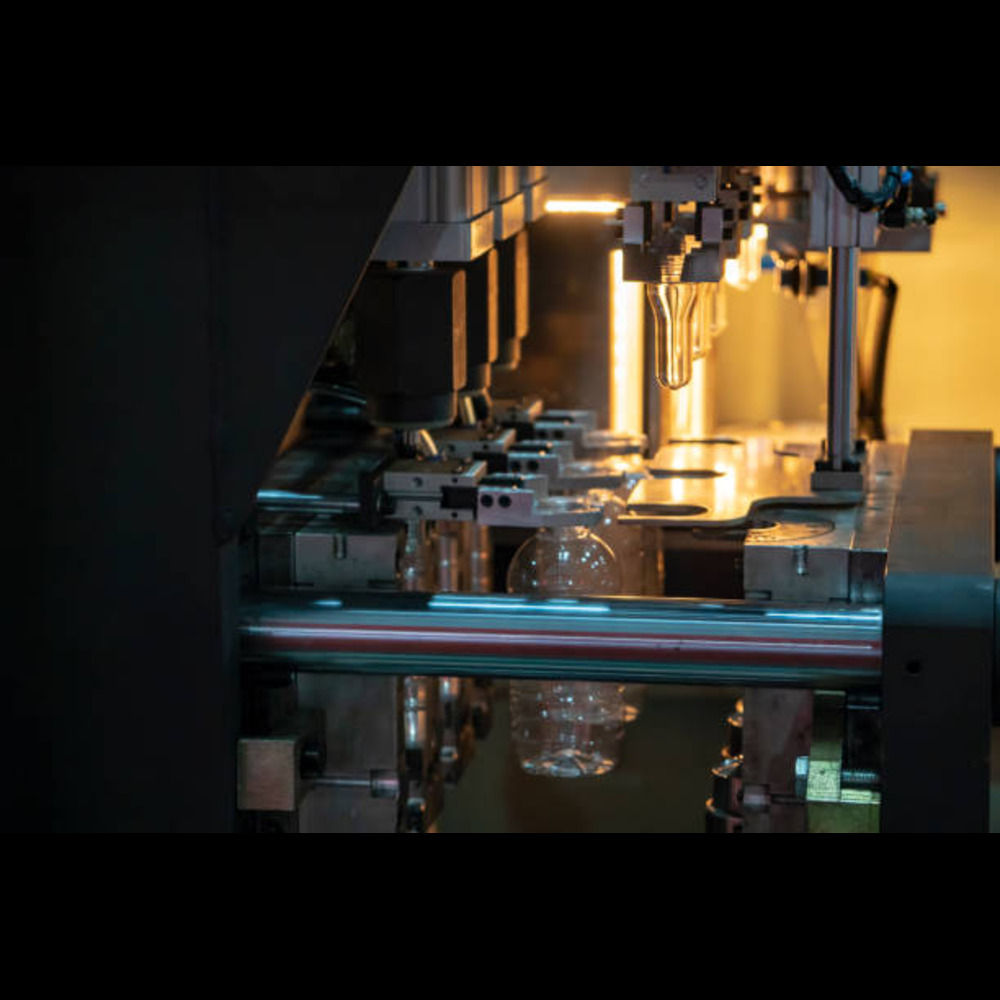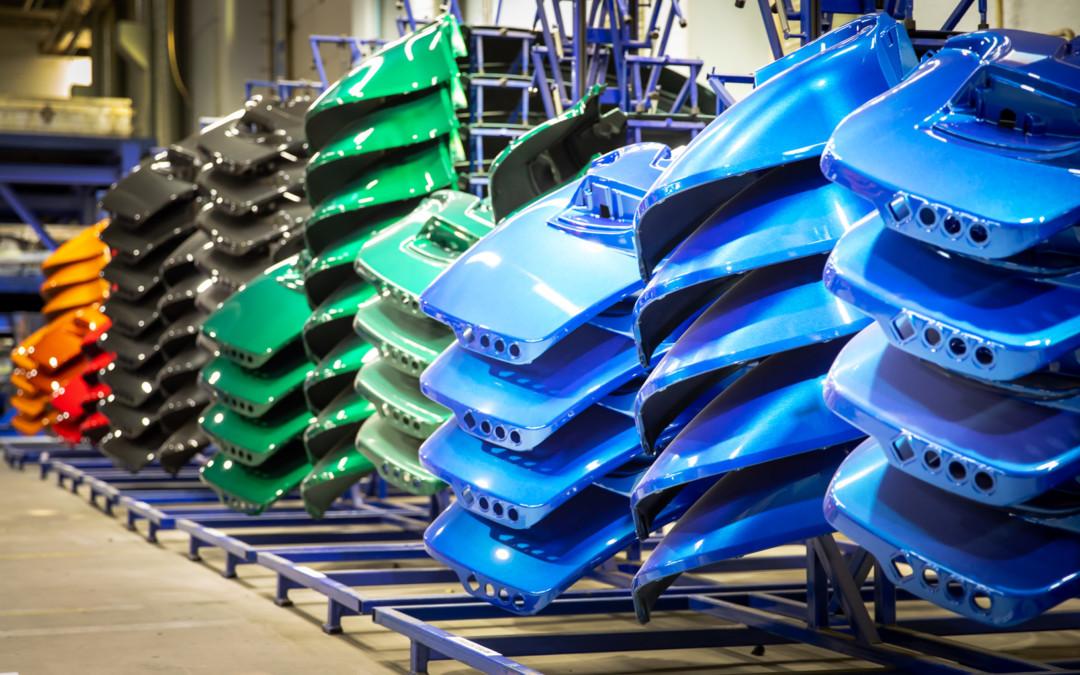Transfer molding is a manufacturing process used to produce molded rubber or plastic parts. Transfer molding process involves transferring a measured amount of material into a closed mold, where it is heated and compressed to take the shape of the mold cavity.
Generally, transfer molding is used for manufacturing intricate and precision parts.
This article gives you insights into,
- What is Transfer Molding?
- Transfer Molding Process:
- What is Transfer Molding Used For? – Products and Applications:
- Difference between Transfer Molding and Injection Molding:
- Difference between Transfer Molding and Compression Molding:
- Resin Transfer Molding (RTM):
- Resin Transfer Molding Process:
- Resin Transfer Molding Applications:
- Resin transfer molding examples:
- Advantages and Disadvantages of Transfer Molding:
- Advantages of Transfer Molding:
- Disadvantages of Transfer Molding:
- How TOPGRID can help you ?
What is Transfer Molding ?
Transfer molding is a precision manufacturing process. The transfer molding process utilizes a closed mold and the application of heat and pressure to transfer pre-measured and heated material into the mold cavity.
This results in the production of high-quality rubber or plastic components. Knowing how to do transfer molding can help you have efficient communication between your production teams.
Here follow the transfer molding process steps in detail.
Transfer Molding Process
The step-by-step process of the transfer molding process is,
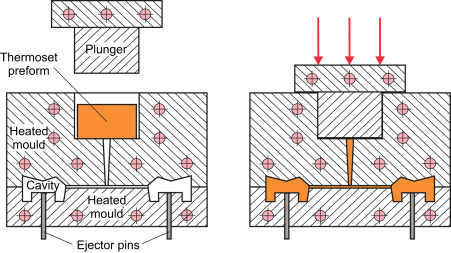
Step:1
The transfer molding process begins with the heating of the molding material, typically a thermoset resin to the appropriate temperature. Degas the resin to remove any trapped air bubbles.
Step:2
Clean the mold and coat it with a release agent. This prevents the part from sticking to the mold. Then close the mold and secure it tightly.
Step:3
Transfer the heated resin from the heating chamber to the transfer pot. Apply pressure to the plunger in the transfer pot. This forces the resin through the transfer port into the mold cavity. The material takes the shape of the mold cavity.
Step:4
Apply pressure to the mold to keep it closed. This cures the resin. Appropriate curing temperature and time should be maintained for the resin to fully cured.
Step:5
Once cured, the mold is opened and the finished product is ejected. Trim or flash any excess material from the product.
Step:6
The molded parts undergo quality checks to inspect any defects and ensure they meet the required standards. This process is repeated for subsequent cycles to produce identical components.
Understanding each step of the manufacturing process helps you identify and address potential defects or inconsistencies earlier. This helps you in ensuring the production of high-quality products.
You can learn about more such processes here.
What is Transfer Molding Used For? – Products and Applications
Transfer molding is used to manufacture various products across various industries. A few applications of transfer molding are,
Electronic Components:
Transfer molding is used for producing electrical components due to its ability to encapsulate delicate electronic components within a protective polymer matrix.

Examples,
- Switches
- Insulators
- Connectors
- Circuit boards
- Encapsulations for coils and transformers
Automotive Parts:
Transfer molding is used for producing automotive parts that require high durability, dimensional accuracy, and resistance to harsh environments.
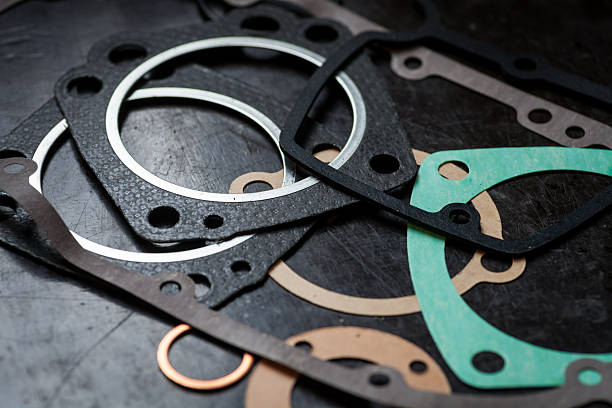
Examples,
- Seals
- Gaskets
- Dashboards
- Door handles
- Vibration isolators
- Engine components
Medical Devices:
Transfer molding is used for producing medical devices due to its ability to produce sterile and biocompatible components.
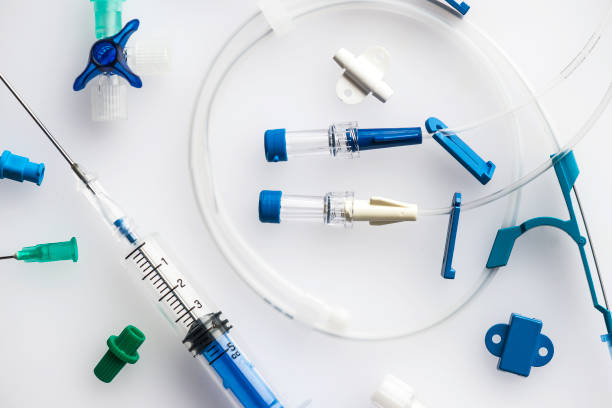
Examples,
- Syringes
- Catheters
- Housings for medical implants
- Disposable medical equipment
Consumer Goods:
Transfer molding is used for manufacturing a variety of consumer goods.
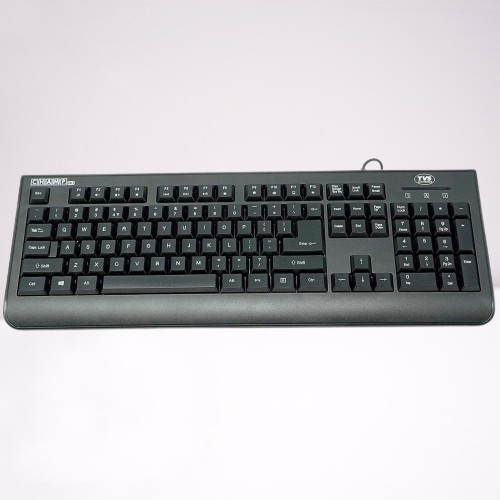
Examples,
- Toys
- Grips
- Handles
- Keypads
- Sporting components
- Housings for electronic devices
Rubber Products:
Transfer molding is commonly used for molding rubber products like,
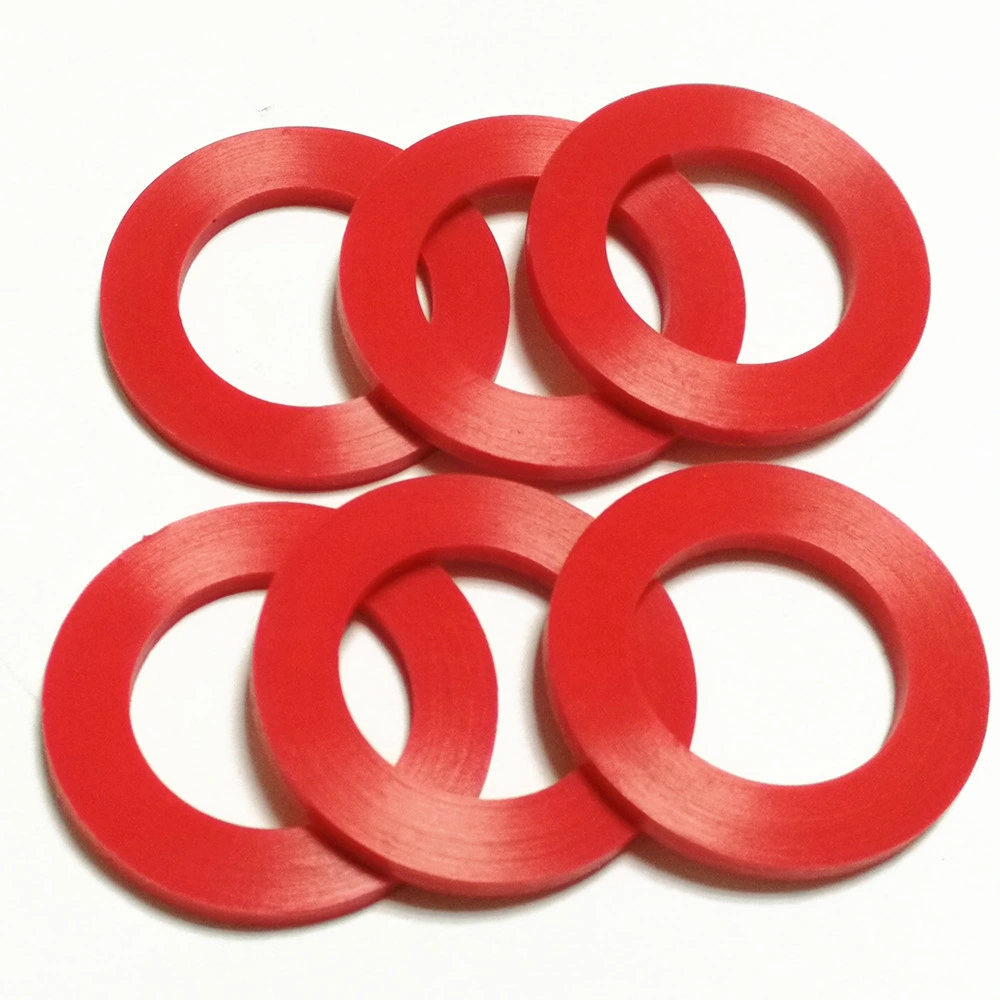
- Grommets
- Washers
- O-rings
In summary,
Transfer molding is chosen for its ability to create detailed and complex shapes. It is suitable for applications where precision and consistency are critical.
Difference between Transfer Molding and Injection Molding
Transfer molding and Injection molding are both plastic and rubber molding processes, but they differ in their methods.
- In transfer molding, a measured amount of material is preheated and transferred into a closed cavity, often through a plunger. Then it is compressed to take the shape of the mold. This process is suitable for intricate or precise parts.
- Injection molding involves injecting molten plastic into a mold at high pressure. It is widely used and ideal for high-volume production of complex parts.
In summary, The transfer molding process offers precision for smaller batches. The Injection molding process is favored for efficiency and large-scale manufacturing.
Difference between Transfer Molding and Compression Molding
When it comes to transfer molding and Compression molding they differ in their material handling processes.
- In transfer molding, the material is preheated and pressurized in a separate chamber. Then forced through an opening into a closed mold cavity. As mentioned before, this process is suitable for intricate or precise parts.
- Compression molding involves placing the material directly into an open mold, which is then closed, heated, and compressed. This process is often used for simpler shapes.
In summary,
The key difference between transfer molding and compression molding is how the material is introduced into the mold and the level of control over the molding process.
Resin Transfer Molding (RTM)
The industry identifies a variety of processes within the transfer molding category. There are areas of overlap and distinctions between each method.
In the case of Resin transfer molding (RTM), the resin transfer molding process and the transfer molding process are distinct processes within the realm of composite and plastic molding.
While they share similarities, resin transfer molding is not a subtype of transfer molding.
Resin Transfer Molding Process
The Resin transfer molding process is a closed molding process. It is used for producing fiber-reinforcement polymer composites.
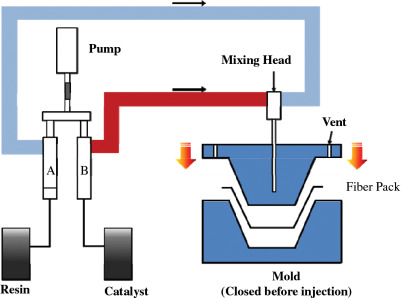
- In the resin transfer molding process, a dry reinforcement preform is placed in a closed mold.
- Then, liquid resin is injected into the mold under pressure.
- The resin flows through the preform, impregnating the fibers and filling the mold cavity.
- Once the resin has cured, the mold is opened and the part is removed.
Resin Transfer Molding Applications
Resin transfer molding is a versatile process that can be used to produce a wide variety of parts including,
- Automotive parts
- Aerospace parts
- Marine parts
- Recreational equipment
- Industrial equipment
Resin transfer molding examples
Resin transfer molding examples are,
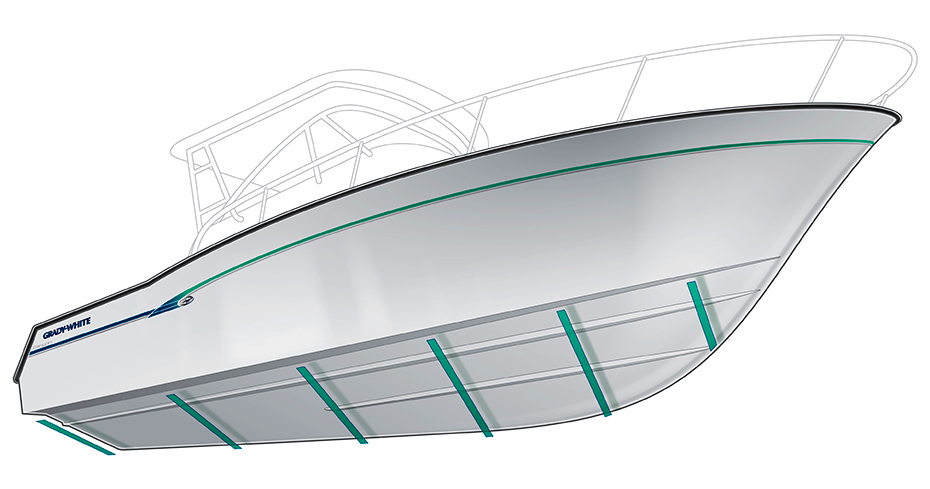
- Body panels
- Aircraft fairings
- Boat hulls
- Snowboards
- Surfboards
In summary,
While both processes involve transferring material into a mold for shaping, the materials, methods, and applications differ between transfer molding and resin transfer molding.
Advantages and Disadvantages of Transfer Molding
When choosing a manufacturing process you need to consider both the benefits and limitations of it. That helps you in better-decision making, minimizing costs, and ensuring the quality of your products.
Here are a few advantages and disadvantages of the transfer molding process.
Advantages of Transfer Molding
- The transfer molding process allows for the production of intricate and complex shapes with high precision and tight tolerances.
- Transfer molding is well-suited for molding around inserts or metal parts, ensuring its applicability in diverse industries.
- The process often yields parts with a smooth and finished surface. This reduces the need for additional finishing steps.
- It allows for intricate designs with sharper edges. Thus providing greater design flexibility compared to other molding methods.
Disadvantages of Transfer Molding
- The transfer molding process has the higher tooling and equipment costs associated with designing and maintaining the intricate transfer pot and plunger system.
- The process can be slower compared to other molding processes. This impacts production efficiency.
- Material waste may occur during the preparation and transfer phases. This is due to the use of sprue and overflow grooves, which can result in excess material that is discarded.
- This process requires additional measures to ensure air is properly evacuated because air can get trapped in the mold during the transfer process. This can lead to defects in the final product.
Conclusion
Transfer molding excels at encapsulating delicate components, producing high-precision parts, and handling thermoset resins. Thus making it a versatile and efficient manufacturing process, widely employed in various applications.
Understanding the specific requirements of your project is crucial for determining whether transfer molding is the most suitable method.
How TOPGRID can help you ?
We TOPGRID, your manufacturing partner, offer you 50+ such manufacturing processes. You can choose as per your product needs. We’re dedicated to upholding the highest standards of quality throughout every stage of your manufacturing process.
From the initial design to the final product completion, we assure you that the materials that undergo these processes and the products produced are quality-checked.
You can completely rely on Us! We simplify your complicated manufacturing processes!
Topgrid – Transfer Molding Service
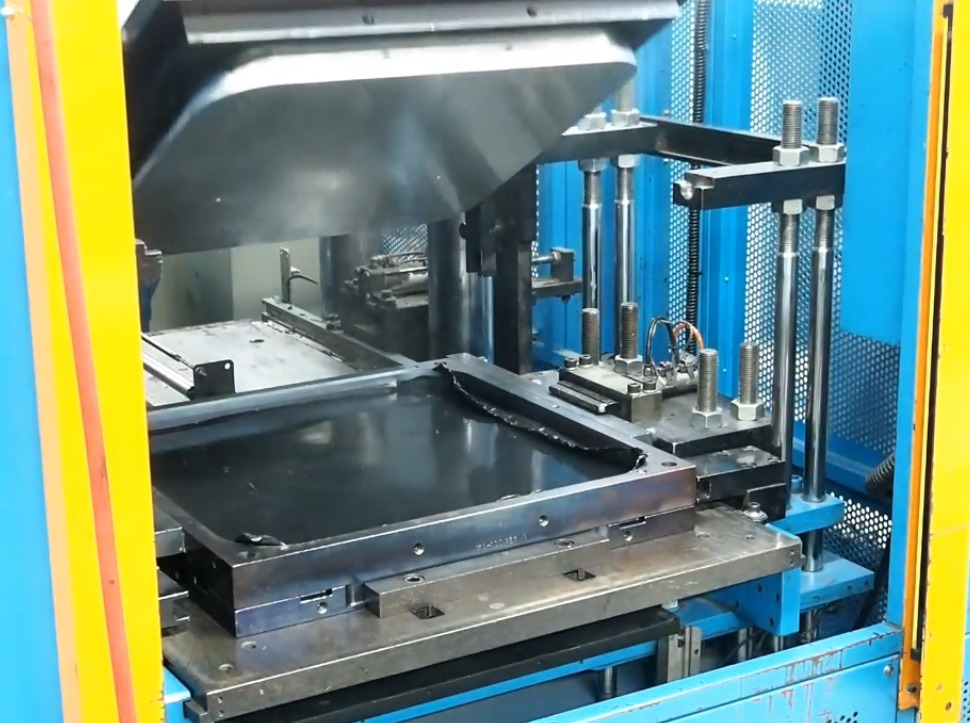
- At Topgrid, we pride ourselves on being a best provider of Transfer Molding Services.
- With a strong commitment to precision, innovation, and customer satisfaction, we are your trusted partner for all your Transfer molding needs.
